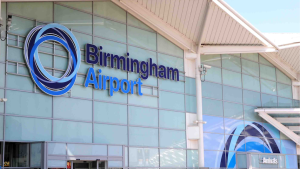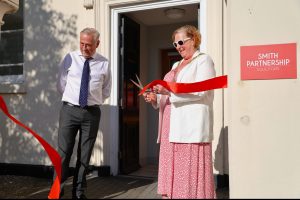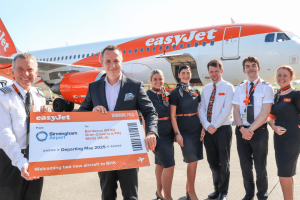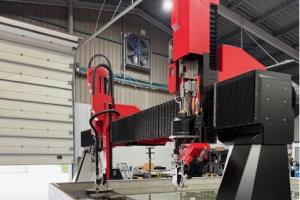Marston’s cheered by interim growth

BREWER and pub operator Marston’s has reported interim revenue and profit growth despite the challenging market conditions.
The Wolverhampton company said in its interim results statement today, which covers the 26 weeks to April 3, that it was making progress across all three of its divisions.
Group revenue rose 0.6% to £309.2m, compared to last year’s £307.5m, while profit before tax and exceptional items was up by 0.4% to £27.8m, compared to £27.7m.
Underlying operating profit increased 0.2% to £65.5m, compared with £65.4m in the same period last year.
Net cash from operating activities rose 52% to £81.3m and borrowings were in line with expectations.
The board has declared an interim dividend of 2.1p per share which will be paid on June 30.
Across the divisions, Marston’s Inns and Taverns saw like-for-like sales up 1.4%, while its operating margin rose 0.5%.
Marston’s Pub Company saw “improving performance trends”, while at Marston’s Beer Company sales rose 8.6% and operating profit went up 1.4%.
The company said it had increased operating cashflow, while it also enjoyed secure and flexible financing.
Earnings per share and interim dividend were said to be in line with expectations.
Looking ahead, it said it continued to develop clear strategies for future development and its new-build programme remained on track and was performing ahead of target.
Ralph Findlay, chief executive, said: “We are pleased with the encouraging performance of the business in the first half year.
“The economic environment remains challenging, but there are two key areas which provide the basis for continuing outperformance in this market: our new-build programme for large managed pub-restaurants; and the introduction of innovative agreements in our tenanted and leased pub estate.”
He said recent trading had been in line with expectations.
In the managed house business, like-for-like sales for the six weeks to May 15 were 1.2% above last year and trends in Marston’s Pub Company and in Marston’s Beer Company were consistent with those reported for the half year.
“We are confident of meeting our expectations for the year as a whole,” he added.
Looking ahead, the company said it remained cautious because of the economic and regulatory uncertainty.
Nevertheless, it said it continued to see ways of developing the business with a focus on clearly defined growth plans, improving cash flow, keeping costs down and improving return on capital.
It said it had made a positive start to the second half, with a like-for-like sales growth of 1.2% in managed pubs in the six weeks to May 15, and trends continued to improve in tenanted and leased pubs and in brewing.
Mr Findlay said growth in the first half reflected a slow return in consumer confidence but recovery remained uncertain due to the fragile economy and fears about increasing taxation.
He said the pub sector, particularly the tenanted and leased pub market, had been particularly affected by the challenging environment.
Nevetheless, the group had still been able to increase revenue and profit before taxation and exceptional items.
“This has been achieved through our continuing focus on value for money; good service; attractive, well positioned pubs; choice of regional beers; and the careful control of costs. We have also benefited by investing in our pubs and by anticipating market trends,” he said.
The company’s two key areas for growth are: its new-build programme for large managed pub-restaurants; and the introduction of innovative agreements in its tenanted and leased pub estate.
In July 2009, the company raised net proceeds of £165.6m through a rights issue intended primarily to fund the development of 60 large managed pub-restaurants to be operated by Marston’s Inns and Taverns.
Mr Findlay said the investment plan was on track in terms of both performance and timescales.
The attractions of investing in these well situated pub-restaurants include: increased exposure to the growing demand for eating out – food typically comprises nearly 60% of revenue, compared to 39% for the managed estate as a whole; and ergonomically designed pubs in prominent, busy locations such as retail parks.
He said the group had also been able to take advantage of reduced competitor activity and acquire prime sites at lower costs compared to previous years.
The company has also enjoyed sustainable high returns on investment. The current trend for both revenue and returns is slightly ahead of target, which are £20,000 per week for revenue and 15% EBITDA return on capital.
The like-for-like sales performance of the 30 similar pub-restaurants opened over the last five years is up 4.5% in the first half year, ahead of the average for the division.
The development of these pub-restaurants is consistent with the group’s focus on food, families, females and ’40/50 somethings’ – the so-called ‘F-Plan’, which the group designed five years ago to recognise longer term growth trends in the pub-restaurant market.
Mr Findlay said the aim was to build 60 of these pub-restaurants over three years, including 15 planned to open this financial year.
Eight have opened so far and the firm is on site at the other seven locations.
“We remain confident of opening 20 new pub-restaurants in 2011 and 25 in 2012. In addition, we aim to be in a position to continue new-build pub development from 2013 onwards at a similar rate,” said Mr Findlay.









